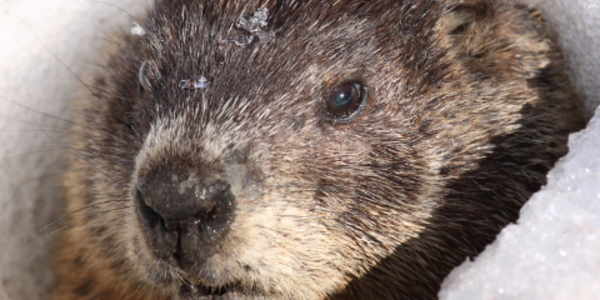SoundCoop: Breakthrough for Passive Acoustic Monitoring’s Big Data

Passive Acoustic Data Program Manager, Carrie Wall, tells us more about these unique data, their storage needs, and how useful these data are.
In addition to being full of life, the ocean is also full of sound. Undersea sounds from both marine life and human activity can be heard many miles away—across oceans in some cases. Passive acoustic monitoring (PAM) is the practice of listening for sounds, often at specific frequencies, for particular purposes or analyses. PAM is a powerful observational tool to detect and characterize sounds produced by fish and marine mammals, ambient noise from physical oceanographic processes, and human-related sources that contribute to the overall ocean noise environment.
By listening to sensitive underwater environments, scientists learn about migration patterns, animal behavior and communication, and the influence of anthropogenic, or human-caused, noise. NCEI stewards these valuable PAM data at the Passive Acoustic Data Archive.
PAM data collection has grown exponentially over the past decade, resulting in petabytes of data that document ocean soundscapes (sounds heard in a particular location), how they change over time, and what animals use these ecosystems at varying timescales. The Sound Cooperative (SoundCoop) project was designed to meet the challenges posed by the large PAM data influx. SoundCoop was led by Dr. Carrie Wall, NOAA NCEI-University of Colorado Cooperative Institute for Research in Environmental Sciences (CIRES); Dr. Leila Hatch, NOAA Office of National Marine Sanctuaries; Dr. Sofie Van Parijs, NOAA Northeast Fisheries Science Center; Dr. Megan McKenna, NOAA NCEI-CIRES; and Rob Bochenek, Axiom Data Science.
Collaborative Technology
Passive acoustic datasets can be huge, with some projects producing terabytes of data per month. Due to their size, extracting key information and comparing it to other datasets in the context of ecosystem-based management is a Big Data challenge that traditional desktop processing methods cannot address. The large size also means managing and sharing datasets across collaborators is challenging.
The SoundCoop Project was a three-year effort funded by NOAA Integrated Ocean Observing System, Bureau for Ocean Energy Management, U.S Navy Living Marine Resources, and the Office of Naval Research. The goal of the project was to develop technology in collaboration with the PAM community to enable scalable processing of comparable sound level metrics and to provide open access to centralized data for science and management applications. One of the repositories hosting SoundCoop data is the NCEI Passive Acoustic Data Archive. Others include Monterey Bay Aquarium Research Institute, Axiom Data Science, and the International Council for the Exploration of the Sea (ICES) database.

Outcome: International Standardized Data
U.S. and international scientists contributed PAM data spanning 12 separate long-term monitoring projects. Datasets from ten of these projects were used to calculate a specific sound level metric called the hybrid millidecade spectra across a diversity of labs and instruments. A year of sound levels recorded in the North Sea and North Atlantic Right Whale (Eubalaena glacialis) calls detected in the New York Bight were also included in the SoundCoop. These datasets were used to explore how sound varied over time (up to 14 years) in the Arctic, how it varied across different regions of the U.S, connected different types of PAM data, and connected soundscape data with environmental information - like wind speed and wave height - at an international scale. Collectively, the contributed data demonstrate the value of standardized processing and the new ability to compare global soundscapes recorded across disparate monitoring efforts.
The collaborative effort of the SoundCoop led to several advances in data management, processing, dissemination, visualization, and knowledge sharing. Two open access software toolkits were produced by project members to process SoundCoop datasets into hybrid millidecade sound levels. SoundCoop Project members, along with the NCEI passive acoustic data archive team, established a standards-driven netCDF format, which greatly facilitated comparison and distribution of the hybrid millidecade sound levels. Project members also created a set of Python-based Jupyter Notebooks available on the NOAA IOOS Github that guide users to create SoundCoop hybrid millidecade netCDFs from raw audio data, and to pull processed datasets from multiple cloud repositories and visualize with environmental sensor data. In addition to these notebooks, ReadMes and other tutorials are included to help more novice users and lower the learning curve for all.
The project developers at Axiom Data Science built an interactive data portal to visualize and explore the SoundCoop datasets alongside environmental data to show the benefits of connecting acoustic and non-acoustic information. The end result is an innovative approach to Big Data data management that current and future PAM projects can leverage.
To check out the SoundCoop Portal and to learn more about the project, visit the SoundCoop website. To learn about NCEI’s passive acoustic data archive, visit the archive's project page.



